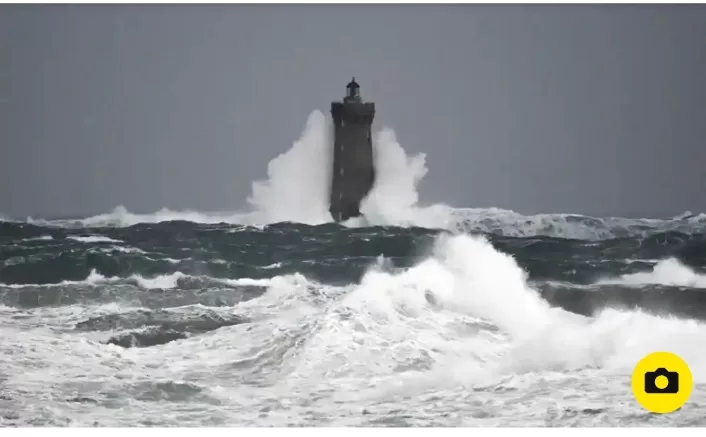Storm Ciarán’s relentless onslaught wreaked havoc across north-western Europe, resulting in a tragic toll of at least seven lives lost and numerous individuals left injured. The tempest unleashed torrential rain and unforgiving winds, reaching speeds of up to 200km/h (124mph). In its wake, it caused extensive damage to homes, necessitated school closures, and compelled airlines and train companies to suspend their services.
The devastating consequences of the storm included the tragic demise of a truck driver in the Aisne département of northern France, who lost his life when a tree fell during the tempest. Authorities confirmed that over 1.2 million people were left without electricity, with approximately half of Brittany’s population affected by the power outage.
In Le Havre, France, a 70-year-old man tragically lost his life due to an incident directly attributed to the record-breaking winds generated by Storm Ciarán. A further loss was incurred in Madrid, Spain, as a woman met her untimely end when a tree collapsed upon her, and three individuals sustained injuries.
Belgium was also adversely impacted, with central Ghent witnessing the tragic demise of two individuals who were struck by falling tree branches. Tragically, one of the victims was a five-year-old child, while the other was a 64-year-old German woman visiting Belgium. In Antwerp, a high wall succumbed to the extraordinary winds, resulting in a third individual sustaining severe injuries.
The Netherlands endured its share of misfortune, with a person fatally crushed by a fallen tree in Venray, located in the southern province of Limburg. Reports indicated that at least ten others suffered injuries from flying debris across the country, with three of them in serious condition.
Germany faced its own share of sorrow as a 46-year-old woman from Bavaria, who was enjoying a family vacation with her husband and two children, fell victim to a falling tree while hiking near Rammelsberg in the Harz mountains. The event was yet another tragic outcome of the relentless storm.
As the relentless tempest unleashed massive waves along the French ports and shorelines, numerous individuals, including seven firefighters, suffered injuries due to falling trees. The most heavily impacted area was Brittany, where authorities issued warnings of wind gusts reaching 207 km/h (129 mph). In response, local authorities implemented closures of parks, forests, seafronts, and trains. They further evacuated over 1,300 individuals, primarily from camp sites, and relocated several houses in Brest following a crane’s collapse.
The severe weather warnings extended across the majority of mainland France’s coastline, with the northern Pas-de-Calais region opening gyms and shelters for migrants attempting to cross the English Channel in small boats.
The French Transport Minister, Clément Beaune, underscored the dangers of driving during such hazardous conditions and urged individuals to exercise caution when traversing areas subject to weather warnings.
Storm Ciarán, which followed Storm Babet’s passage just two weeks prior, was propelled by a potent jet stream originating in the Atlantic. It unleashed heavy rainfall and record-breaking winds, which had already resulted in substantial flooding in Northern Ireland and parts of the UK.
The tempest also impacted travel, with rail and ferry services, including the Eurostar, experiencing delays and cancellations. Dutch national airline KLM was compelled to cancel all incoming and outgoing flights in the Netherlands.
The Dutch National Headwind Cycling Championships, held on the Oosterscheldekering storm surge barrier, were hastily organized but subsequently called off due to the storm’s excessive strength.
In assessing the storm’s impact, Dutch weather forecaster Roosmarijn Knol highlighted the pivotal role of timing. The confluence of a warm autumn with abundant rainfall meant that trees retained their leaves, and the soil remained saturated, creating a sponge-like environment. As a result, even fragile trees were at risk of toppling over. Knol emphasized the marked contrast with a late November storm, by which time leaves have typically fallen.
The repercussions of Storm Ciarán extended as far south as southern Spain and Portugal. In these regions, red alerts were issued, power cuts occurred due to fallen trees, and train services were disrupted. Spanish authorities warned of waves reaching up to nine meters along the northern Atlantic coast, and Spanish airports reported 42 canceled flights.






